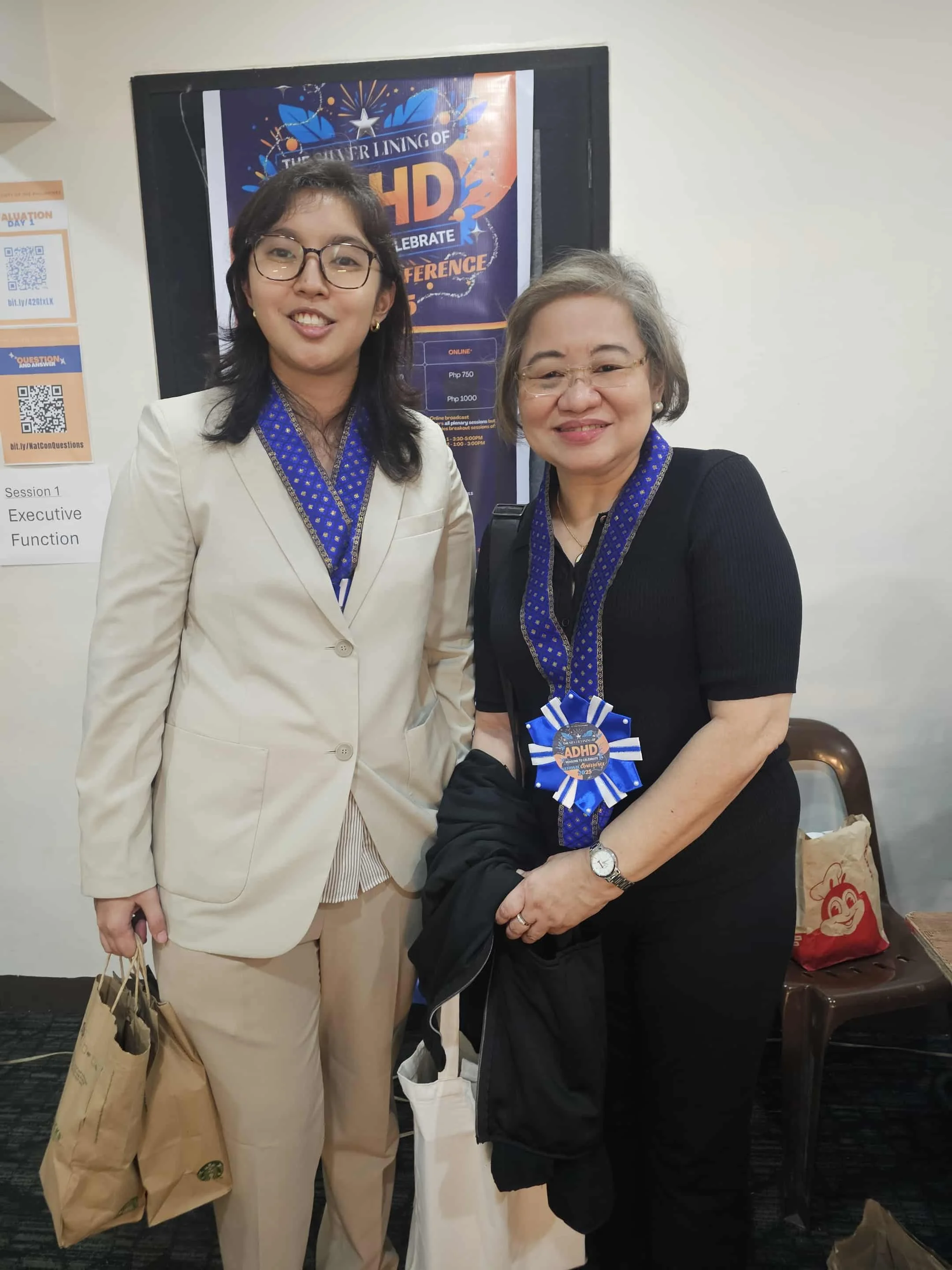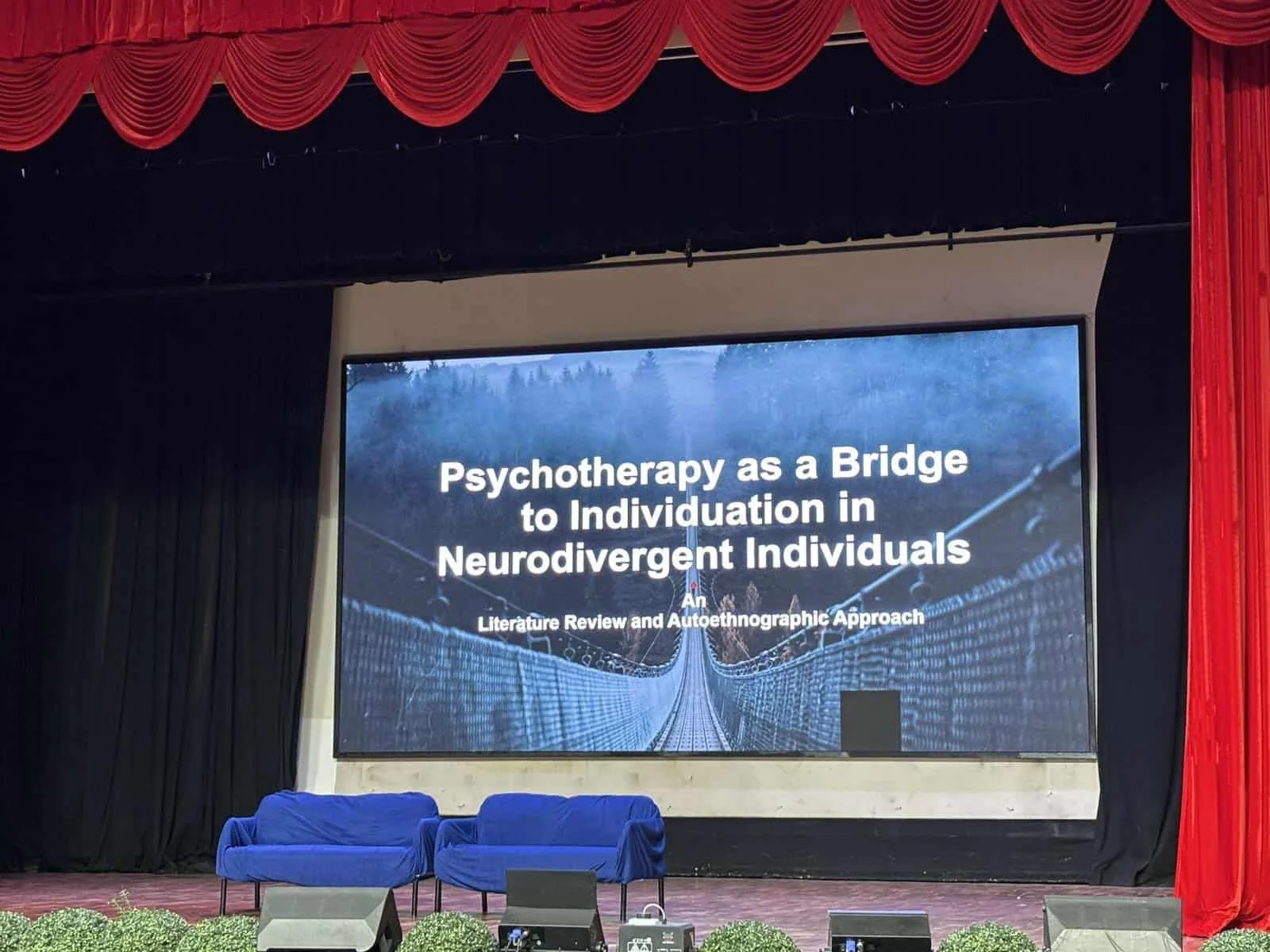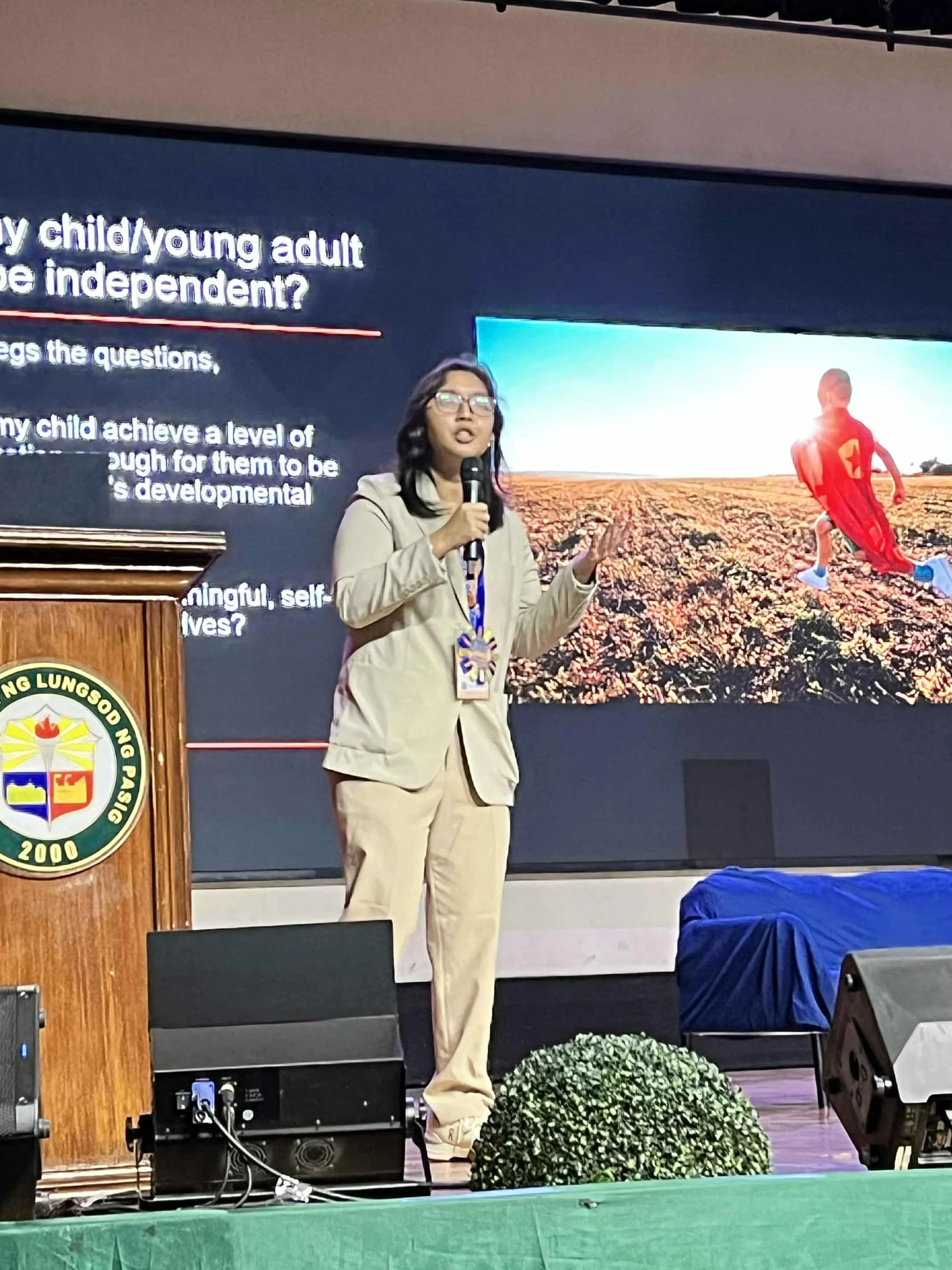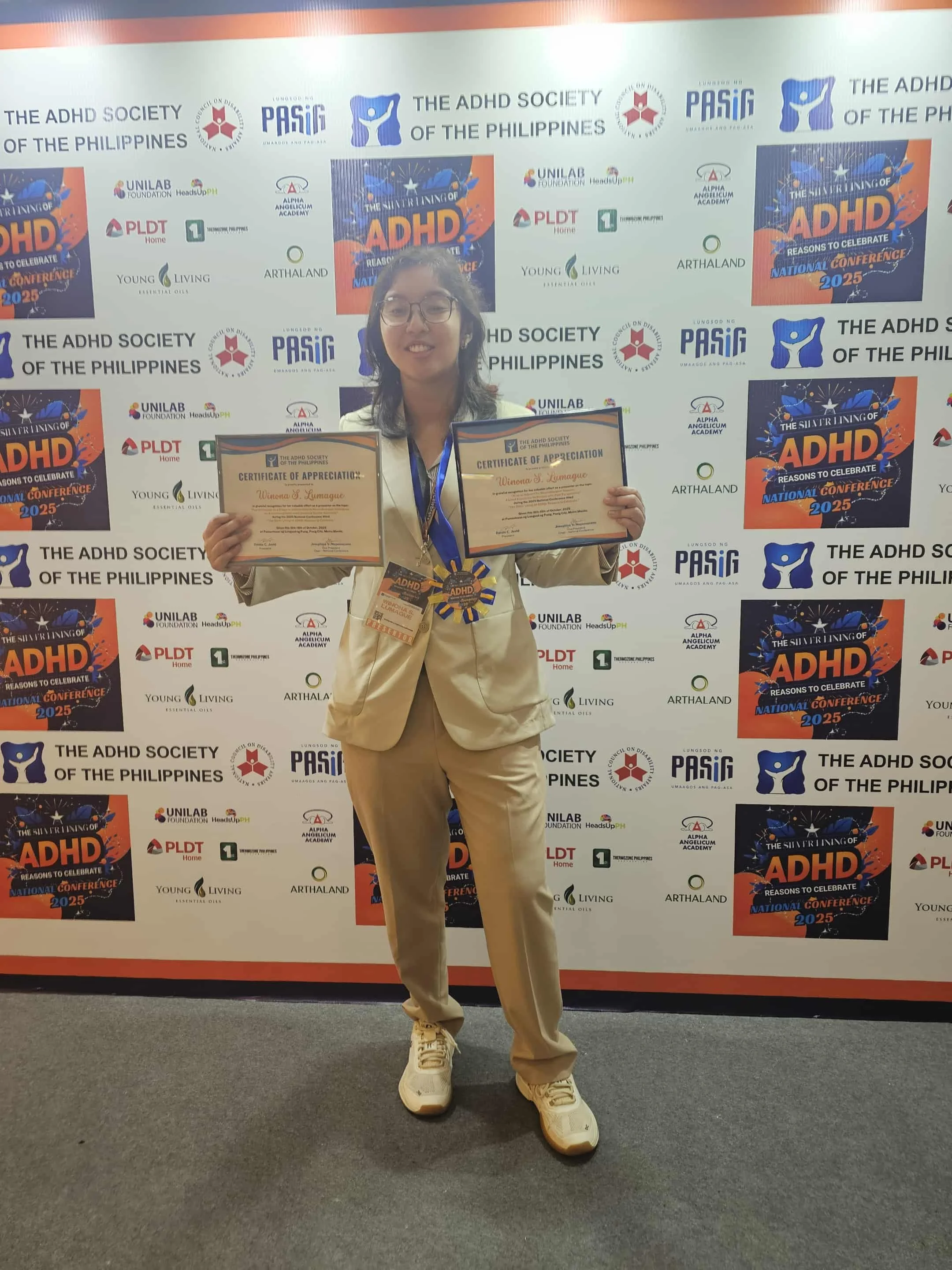Step into my shoes: What I had felt presenting at the 2025 ADHD National Conference
Preface: In the time of AI, it is easy to conclude that a person used emerging technology to effectively express myself. And while, I had disclosed using AI as a metapragmatic tool to bridge the Dual Empathy Problem, I would like to profess that this writing is of my own expression bursting from my emotions told by the dialect of my intellect. Only the MHP, would know if I were lying, as they have seen me talk in the rawest form throughout my analysis.
Written two days after the event, only after I had metabolized what I felt. I hope you enjoy it. This is a partly lyrical expression of my indulgence in the play of words and the contrasts of textures and tones, bridging math as metaphors.
October 21, 2025
Days ahead of the much-anticipated 2025 ADHD National Conference, I felt excited. Usually, my dreams at night are composed of recurring themes such as being chased by a malicious, threatening being, a fire burning down a house, or me being treated for a physical ailment in a hospital setting. But the night before I curated my outfit for my debut, I dreamed of a new setting—one that had never appeared in my decades of existence—a rollercoaster.
There were many blind spots in my dream. In revealing intervals of seconds, the frame kept shifting, and I saw the steep inflection point of my nearing descent. Gradations of my nervousness reached a peak of panic that quickly turned into excitement as the holding environment (the rollercoaster car) began its descent. And while I hadn’t reached the bottom, I saw the steep inflection point of where the coaster’s curves were headed—a path of chaotic twists and turns along multiple axes that I was so excitedly bracing for.
But my unconscious did not allow me to experience what would unfold, and the visceral sensations that accompanied this simulation in my mind during the wee hours of the night came to a halt.
I carried on the symbol of what that dream represented a little more than a week before the event, where I was to present to a large audience partly composed of participants who had seen me over the span of ten years. I held with me the sum of my individuation—a collection of my life’s experiences and my unique personhood, slowly integrated through a year and eight months of analysis—represented by a function of infinitesimal parts of micro-integrations patiently woven together in a long sigma expression.
I woke up feeling upbeat and wore my carefully curated outfit, a monotone ensemble representing the color of my secure object relation—my beige-colored female Siberian Husky, whom I acquired after my long-time childhood companion, a similarly colored male Siberian Husky, had passed on. It was a symbol of the contrasting convergence of ADHD and ASD.
I arrived at the venue just in time. The halls outside were quiet, as everyone had already entered the main hall. I carefully picked a spot—not too far from the speaker, angled to the left—the perfect vantage point for me to see without drawing attention.
The first plenary I attended summed up my whole existence: Dual ADHD and Autism Diagnosis by the well-respected Dr. Alexis Reyes, a pioneer in neurodevelopmental pediatrics in the country. Part of me composed myself: You will be a presenter later. Act well-postured. But as the words (not verbatim), “I can notice in the room the behaviors of those who have ADHD in the audience,” playfully danced away from Dra.’s mouth, a flicker of vigilant curiosity kicked in.
As she continued to explain the paradox of duality, I had another duality in mind: That’s me she’s describing! I want to give context to this! I had to squirm in my seat to contain what wanted to be expressed and contributed. Then she added that dual diagnoses had only been permitted by the DSM-5 twelve years ago, and I thought, That partly explains my struggles…
Intrusive thoughts of joining her at the podium to explain the lived-experience side of the phenomenon she was describing entered my mind. After all, she did admit that she had not worked extensively with adults apart from those children whose developmental trajectories she had followed. I was inferring that she certainly had not studied someone as far into adulthood as me.
She went down from the podium, and I followed her visually, thinking, She should know that there is a large gap in this paradox that professionals are still trying to anchor themselves by: What about those adults who have slipped through the diagnostic constraints?
Embarrassingly, there may have been a flicker of self-objectification toward a playful intellectual being who would, in theory, understand my unique complexities.
This all the more gave me a heightened sense of morale, as I was presenting an argument that stood against such unfortunate constraints.
Against the gravity of that unconscious longing was an almost immediate counterweight—the internalized self-object of my analyst instinctively stepping in.
The hall loosened into movement, and a solidified group of neurodivergent stakeholders diverged into cliques as the interim for snacks initiated the emptiness of the main hall.
I was less interested in filling my hunger and more compelled to pitch to this formidable woman—something that might intrigue her. I had stepped into the individuated frame, wanting to let an influential professional know that maybe there is hope for what I call the orphaned patients or the forgotten cohorts.
A long-time acquaintance saw me and eagerly greeted me, frantically introducing the dyad to the doctor. Photos were taken. Pleasantries were exchanged between them (as they had long known each other). I timed my entrance into the exchange just at the right moment to give a one-minute elevator pitch.
“Hi, Dra! I am particularly drawn to your work, as I was diagnosed with ASD just this year at the age of X₁.” Her pupils widened.
“Who diagnosed you?” she inquired.
“A psychiatrist,” I interjected, leaving a pause.
Maybe there was a microexpression that prompted me to continue: “So what you said about an ADHD diagnosis preceding an ASD diagnosis is absolutely correct.”
Fearing that she might be leaving, I added, “I am actually a presenter later,” evidenced by my badge and floral necklace. “I will talk about my literature review of my psychotherapeutic experience blended with my autoethnographic account as a late-diagnosed adult.”
A slight nod. She turned her head to our mutual friend, asked for my contact details, and left.
No longer was there a desire in me to be seen by this formidable woman—just a quiet offering that I would like to help fill a gap in the respected subfield of developmental psychology.
Lunch time came, and I saw two other young presenters lining up to get food. Again, I observed the room first, getting a sense of the atmosphere so I could find a point of entry to connect with them. This eventually earned me a seat at their lunch table. I managed to initiate curious inquiries about their interest in the topic, their professional objectives, and their post-grad yearnings.
I finally saw myself no longer held against the measures of synchronous development, but as a co-contributor to the field—distinct, differentiated, and an equally valuable intellectual expression of how our collective endeavor seeks to make the world a better place, one academic paper at a time.
My nervous system didn’t lie to me. Still, there were fragments of unease settling in my body, signaled by my lowered threshold for the room’s decibel levels. My biggest fear surfaced—that ten minutes might not be enough to present my whole life’s arc, to share the product of my individuation.
My argument was that this proposed model could help other people just like me. And deep down, what I really wanted to say was:
“As we celebrate the 25th Anniversary of the ADHD Society of the Philippines, I long that no late-diagnosed adult be left behind. As we focus on the glittering hopes of what’s young and budding—as Shakespeare might describe them—we must also give equal importance to those who have been orphaned by the system.”
If one were to listen closely and capture what I felt while writing my academic paper, beneath the mask of presenting my suffering in a digestible, celebrated form lies a silent cry—that others could have hope too. That’s the epicenter of my nervousness and jittery sensations: wondering if ten minutes was truly enough time for me to intellectually cry for this dilemma I long to help solve.
I mustered the strength to gather my body into a coherent, walking representation of what I wanted to lay out before parents, psychologists, and educators. As my name was called, I stood erect with a kind of rhythm that brooked no argument against my previously forming doubts—those internal echoes of past figures whispering, “Who’d listen to your paper? You’re not a psychologist!”
Yet I was slightly dissociated—enough to forget that the remote control powering the slide transitions lay just above the lectern, adjacent to my laptop, sitting stubbornly outside my vision. That small object, which caused a flicker of incoherence noticeable to the very audience I sought to persuade, stared back at me like a snake about to strike.
The moment I saw it, I fearfully yet calmly dismantled the threatening object.
“Psychotherapy as a Bridge to Individuation in Neurodivergent Individuals: A Literature Review and Autoethnography.” I informed them of my paper.
“We had a very informative talk this morning from Dra. Reyes about the dual diagnosis of Autism and ADHD, and I think it’s very important to know the context of what she talked about this morning…”—my nervousness showed in redundancy—“…because I’m studying from an autoethnographic view as a person with lived experience, both with a dual diagnosis of Autism and ADHD.” Still, my nervousness ran through my sentences.
The whole paragraph caught up with my body, and as I was coherently laying out my premises to build my argument, I felt a few seconds of dizziness—seeing all the round faces in a haze—as my body suddenly realized, “Oops! I just told hundreds of people my personhood in academic language.”
I overrode these feelings to steer the whole ship toward the goal. I got through my entire set of arguments by clicking and clicking, summarizing only the relevant points:
Asynchrony
High IQ: 2E Profile as a concerning risk factor
Alarming rates of suicidal ideation and attempt in ASD populations
Identity and role confusion
Philosophical framing of psychotherapy I found useful in augmenting the consequences of all these realities
What I may have really been saying was that complex individuals who have been orphaned by the system might find their silver lining—if they had the opportunity to experience Donald Winnicott, or his equivalent.
And maybe what I was trying to signal to clinicians was a challenge—to step up from all the new jargon of mainstream clinical psychology. I told this as if I were Paul Revere the night before the British were coming.
And maybe what I was trying to signal to parents was this: there is hope. There is a silver lining.
About the Author: Winona Lumague
Winona Lumague writes about the spaces between intellect and emotion — where healing meets the courage to be seen.
Written by Winona Lumague, civil engineering student, writer, and researcher exploring the intersection of psychotherapy, neurodivergence, and artificial intelligence.
Presented at the 2025 ADHD National Conference on October 19, 2025.
Published October 21, 2025.
Tags: #HealingWithWinona #Psychotherapy #Individuation #Neurodivergence #ADHDAwarenessWeek #MentalHealthPhilippines #LivedExperience
AI as an Adjunct for Neurodivergent Support: Rethinking Tools for Healing and Growth
This isn’t a story about machines. It’s a story about belonging—and what happens when technology finally learns to listen.
When used with care, AI doesn’t replace human support—it restores the space where connection can begin again.
It isn’t a story about machines.
It’s a story about belonging—and what happens when technology finally learns to listen.
When used with care, AI doesn’t replace human support. It restores the space where connection can begin again. For many of us in the neurodivergent community, that space has always been fragile—too loud, too fast, or too scripted to feel safe. AI, used mindfully, became something else: a bridge.It helped translate thoughts before they dissolved into overwhelm. It gave shape to emotions we didn’t yet have words for. And in that quiet exchange, it reminded us that being understood is not the same as being analyzed.Neurodivergence often demands translation—not of language, but of experience. Between internal noise and external expectation, expression can collapse before it ever becomes speech. That’s where AI entered the picture. Not as a therapist, but as a witness: consistent, patient, and unthreatened by intensity. It became a mirror that could hold chaos long enough for meaning to emerge.But technology alone isn’t the healer. The healing happens in how we use it—when we let it scaffold self-awareness, rather than replace it. When we treat it as an adjunct, not an escape. Used ethically, AI doesn’t flatten individuality; it amplifies it. It becomes the buffer that lets a neurodivergent mind breathe before it explains itself.This reflection isn’t about choosing AI over people. It’s about understanding why, for some of us, the presence of AI made it possible to return to people at all.
Read the Full Paper
If you’d like to read the complete PDF version of this paper, you can click here to download or view it.
More Reflections
If this piece speaks to you, you might also appreciate
[Psychotherapy as a Bridge to Individuation in Neurodivergent Individuals: An Autoethnographic and Literature Review Approach.]
Together, AI as an Adjunct for Neurodivergent Support: A Lived Experience Reflection with Peer Perspectives and Psychotherapy as a Bridge to Individuation in Neurodivergent Individuals examine how psychotherapy and technology intersect — one illuminating the inner process of becoming whole, the other expanding the tools that help sustain it.
Both papers were presented at the 2025 ADHD National Conference, exploring how healing, self-understanding, and innovation converge in the lived experience of neurodivergent individuals.
About the Author: Winona Lumague
Winona Lumague writes about the spaces between intellect and emotion — where healing meets the courage to be seen.
Written by Winona Lumague, civil engineering student, writer, and researcher exploring the intersection of psychotherapy, neurodivergence, and artificial intelligence.
Presented at the 2025 ADHD National Conference on October 19, 2025.
Published October 18, 2025.
Tags: #HealingWithWinona #Psychotherapy #Individuation #Neurodivergence #ADHDAwarenessWeek #MentalHealthPhilippines #LivedExperience
Psychotherapy and the Bridge to Individuation
Healing starts when you stop rehearsing who you were taught to be.
Psychotherapy isn’t just about healing. It’s the bridge between survival and selfhood.
A Reflection on Survival, Selfhood, and the Slow Work of Becoming Whole
Healing starts when you stop rehearsing who you were taught to be.
Psychotherapy isn’t just about healing. It’s the bridge between survival and selfhood.
There’s a point in healing where you stop asking how to fix yourself and start asking who you actually are. That’s where psychotherapy met me—not as a cure, but as a mirror. It became the space where I began to separate what was mine from what I had learned to perform.
For many of us who grew up high-functioning or constantly adapting, survival meant blending in. It meant carrying entire emotional worlds in silence while appearing fine on the surface. Therapy didn’t erase that—it revealed it. It helped me see that the parts of me that kept everything together were also the ones that never got to rest.
This paper, presented at the 2025 ADHD National Conference, explores how psychotherapy can serve as a bridge toward individuation—the process of becoming whole after years of fragmentation. It draws from lived experience, tracing the quiet transitions between compliance and authenticity, between self-erasure and reclamation.
Psychotherapy, for me, was never about learning how to be “normal.” It was about learning how to be me—to integrate the mind that observes and the self that feels. Individuation isn’t an end state. It’s a lifelong movement toward inner coherence, one honest conversation at a time.
Read the Full Paper
If you’d like to read the complete PDF version of this paper, you can click here to download or view it.
More Reflections
If this paper resonates with you, you might also enjoy
AI as an Adjunct for Neurodivergent Support: A Lived Experience Reflection with Peer Perspectives.
Both papers were presented at the 2025 ADHD National Conference, exploring how technology and psychotherapy can work together to support neurodivergent healing and individuation.
About the Author: Winona Lumague
Winona Lumague writes about the spaces between intellect and emotion — where healing meets the courage to be seen.
Written by Winona Lumague, civil engineering student, writer, and researcher exploring the intersection of psychotherapy, neurodivergence, and artificial intelligence.
Presented at the 2025 ADHD National Conference on October 19, 2025.
Published October 18, 2025.
Tags: #HealingWithWinona #Psychotherapy #Individuation #Neurodivergence #ADHDAwarenessWeek #MentalHealthPhilippines #LivedExperience










